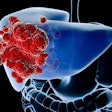Self-referral in medical imaging is a significant contributing factor in diagnostic imaging growth, boosting the use of imaging by 60% and increasing associated costs by more than $3 billion, according to a new study published in this month's Journal of the American College of Radiology.
Dr. Ramsey Kilani of Duke University Medical Center and colleagues identified the relative risk of physicians referring patients for imaging to facilities in which the physicians have financial interest (i.e., self-referrers), compared with physicians referring patients for imaging to facilities in which they have no financial interest (radiologist referrers).
In a meta-analysis of the available medical literature, they found that nonradiologist self-referrers of medical imaging are approximately 2.48 times more likely to order imaging than clinicians with no financial interest in imaging, which translates to an increased imaging utilization rate of 60% (JACR, July 2011, Vol. 8:7, pp. 469-476).
Kilani's team cited a 2008 U.S. Government Accountability Office report, which showed that $14.1 billion was spent on diagnostic imaging in 2006. Of this amount, 64%, or $9 billion, went to physician offices; of that $9 billion, 68% went to nonradiologists. Using the 60% percent utilization fraction attributable to self-referral, the team calculated a theoretical associated cost of $3.6 billion.



















